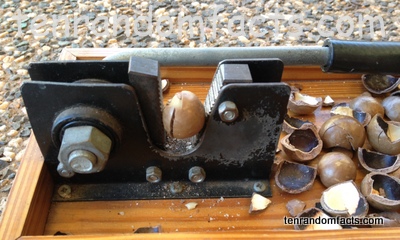Nutcrackers have many uses: nut cracking, displaying, starring in ballets…
- Nutcrackers are items used to break nut shells to access the nut, using combined mechanical and human power.
- A nutcracker in ancient times was a partially hollowed stone that held the nut, and another stone was used to crack the nut shell.
- The oldest nutcracker known to the world and made from metal, was found in the Taranto area in Italy, Europe, and dates back to 300 to 200 BC.
- Modern nutcrackers are generally similar to pliers, except the ends near the nut are pivoted, causing a different lever action, and they are typically made of metal or wood, but ivory, china, bone, silver, and brass have been used.
- From the 1400s, nutcrackers were very decorative, resembling a person or fictional character, and were commonly made in France and England.
- Nutcracker figurines today are used more often ornamentally, notably during the Christmas season, and for this reason they are becoming a Christmas symbol.
- The nutcracker has been depicted in the famous book and ballet of the same name, and the English term was in use as early as 1481.
- Some nutcrackers have a screw type mechanism which is wound down on to the nut to force the shell to crack, and these can be useful to crack very hard shelled nuts like macadamia nuts.
- In the early years of German nutcrackers, the crackers were believed to be protectors based on their appearance and stature.
- Decorative nutcrackers are popular items to be collected, particularly those from the remote mountainous region of Sonneberg, in Thuringia, Germany.
Bibliography:
History of Nutcrackers, 2014, Leavenworth Nutcracker Museum, http://www.nutcrackermuseum.com/history.htm
Nutcracker, 2014, Wikipedia, http://en.wikipedia.org/wiki/Nutcracker







Glad to see your Mum can finally eat her Macadamias!